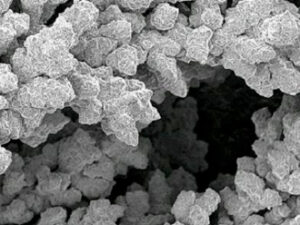Description
Cerium Oxide: A Versatile Catalyst Reshaping Industries
Cerium oxide, also known as ceria (CeO₂), is a fascinating compound that’s rapidly gaining prominence as a powerful and versatile catalyst across a wide range of industries. Its unique properties, stemming from its ability to readily switch between oxidation states (Ce³⁺ and Ce⁴⁺), make it an exceptional enabler for numerous catalytic reactions. This article delves into the reasons behind ceria’s catalytic prowess and its diverse applications.
The Unique Properties of Cerium Oxide
At the heart of ceria’s catalytic activity lies its ability to store and release oxygen. This oxygen storage capacity (OSC) is a direct consequence of the ease with which cerium can transition between its +3 and +4 oxidation states. When exposed to an environment deficient in oxygen, CeO₂ can release oxygen, becoming Ce₂O₃ (or a non-stoichiometric composition close to it), replenishing the oxygen-poor environment. Conversely, when oxygen is abundant, ceria can absorb it, reverting to CeO₂.
This redox flexibility allows ceria to act as both an oxidant and a reductant, making it a highly effective catalyst in various redox reactions. Furthermore, the presence of oxygen vacancies (sites where oxygen atoms are missing from the crystal lattice) enhances the reactivity of the material by providing active sites for reactant adsorption and reaction. The concentration and mobility of these oxygen vacancies can be tailored through modifications in ceria’s synthesis and doping, further fine-tuning its catalytic properties.
Applications of Cerium Oxide as a Catalyst
The remarkable properties of cerium oxide have led to its widespread adoption in various catalytic applications:
- Automotive Exhaust Catalysis: This is arguably the most significant application of ceria. It serves as a crucial component in three-way catalytic converters, facilitating the simultaneous oxidation of hydrocarbons and carbon monoxide to carbon dioxide and water, and the reduction of nitrogen oxides (NOx) to nitrogen. Ceria acts as an oxygen buffer, providing oxygen to oxidize hydrocarbons and CO when the exhaust stream is lean (excess oxygen) and scavenging oxygen to reduce NOx when the exhaust stream is rich (deficient in oxygen).
- CO Oxidation: Ceria-based catalysts are highly effective in oxidizing carbon monoxide (CO) to carbon dioxide, a crucial process for removing this toxic gas from various industrial streams and air purification systems. Its high OSC allows it to efficiently facilitate the CO oxidation reaction even at relatively low temperatures.
- Selective Catalytic Reduction (SCR) of NOx: Ceria can also be employed as a catalyst or a support for catalysts in the selective catalytic reduction of nitrogen oxides using ammonia (NH₃-SCR). It enhances the activity and stability of other active components, like vanadium oxide or copper, promoting the selective reduction of NOx to nitrogen.
- Water-Gas Shift Reaction (WGS): The WGS reaction, which converts carbon monoxide and water to carbon dioxide and hydrogen, is a critical step in producing hydrogen for various applications. Ceria-based catalysts exhibit excellent activity in this reaction, particularly at low temperatures.
- Oxidative Coupling of Methane (OCM): OCM is a promising route for converting methane, the main component of natural gas, into valuable chemicals like ethylene. Ceria-based catalysts, often doped with other metal oxides, show potential for selectively converting methane to ethylene through oxidative coupling.
- Fuel Cell Catalysts: Ceria is also finding applications in fuel cells, particularly solid oxide fuel cells (SOFCs). It can serve as an electrode material or a catalyst support, enhancing the performance and durability of these energy-efficient devices.
Modifying Ceria for Enhanced Catalytic Performance
Researchers are constantly exploring ways to further enhance the catalytic performance of ceria. Some common strategies include:
- Doping: Introducing other metal ions into the ceria lattice can significantly alter its electronic and structural properties, leading to improved OSC, higher surface area, and enhanced catalytic activity.
- Nanostructuring: Synthesizing ceria in the form of nanoparticles, nanowires, or other nanostructured materials can increase its surface area and expose more active sites for catalysis.
- Support Materials: Depositing ceria onto high surface area support materials like alumina or silica can improve its dispersion and stability, as well as enhance its accessibility to reactants.
- Surface Modification: Modifying the surface of ceria with various chemical treatments or coatings can alter its surface acidity or basicity, optimizing it for specific catalytic reactions.
Conclusion
Cerium oxide is a remarkable material with exceptional catalytic properties, driven by its unique redox behavior and oxygen storage capacity. Its versatility has led to its widespread adoption in diverse applications, ranging from automotive exhaust catalysis to energy conversion. As research continues to unlock new ways to tailor and optimize ceria’s properties, its role as a key enabler in sustainable and efficient catalytic processes will undoubtedly continue to grow. Future advancements will likely focus on developing ceria-based catalysts with even higher activity, selectivity, and stability, contributing to a cleaner and more sustainable future.














Reviews
There are no reviews yet.